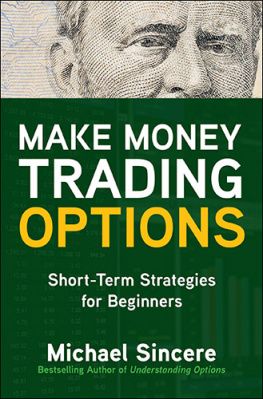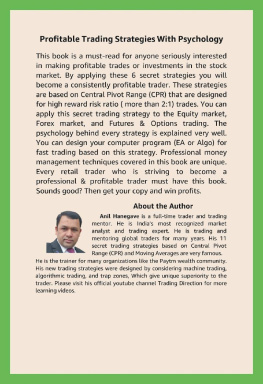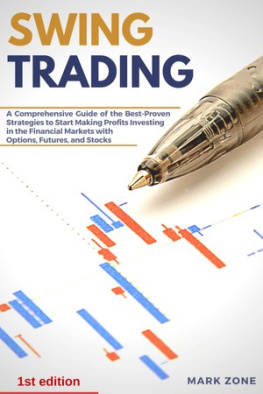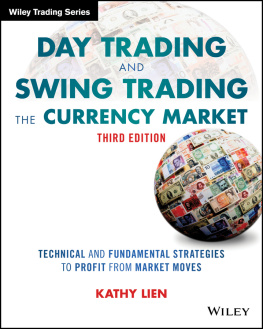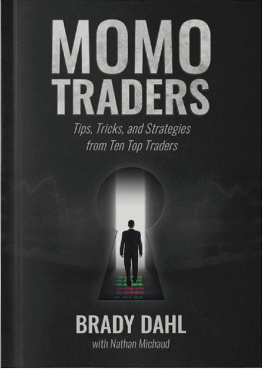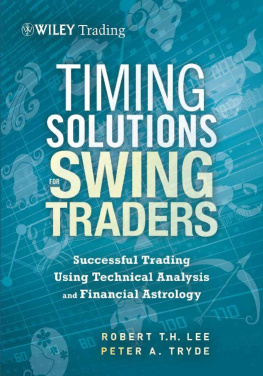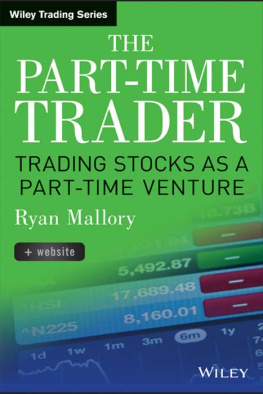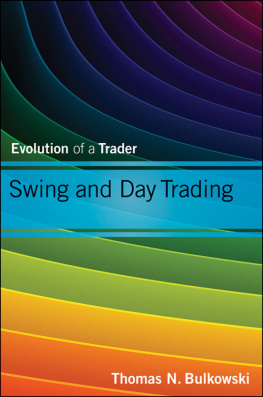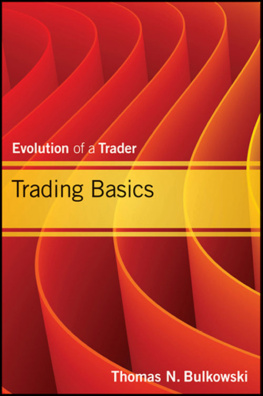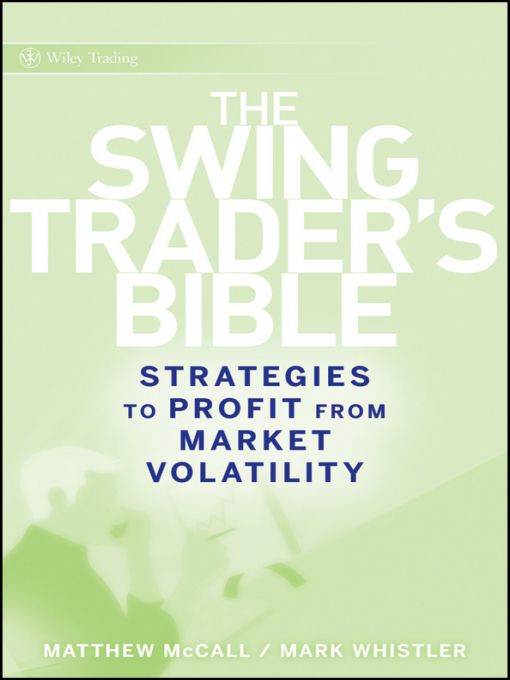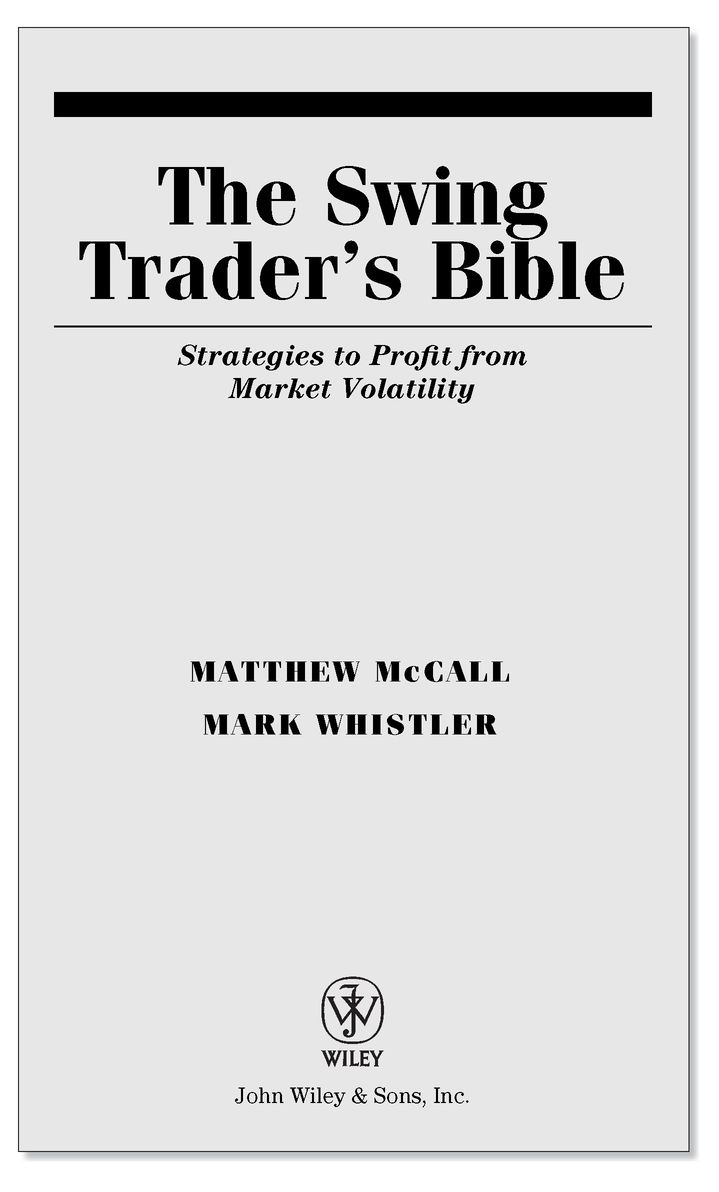Table of Contents
Founded in 1807, John Wiley & Sons is the oldest independent publishing company in the United States. With offices in North America, Europe, Australia and Asia, Wiley is globally committed to developing and marketing print and electronic products and services for our customers professional and personal knowledge and understanding.
The Wiley Trading series features books by traders who have survived the markets ever changing temperament and have prosperedsome by reinventing systems, others by getting back to basics. Whether a novice trader, professional or somewhere in-between, these books will provide the advice and strategies needed to prosper today and well into the future.
For a list of available titles, please visit our Web site at www.WileyFinance.com.
Acknowledgments
Thank you so much to Kevin Commins, Meg Freeborn, Pamela van Giessen, and John Wiley & Sons, Inc., for making this book possible. Also, thank you to Sandy Whistler and Ed Juhan for being incredible parents and to Karen, Mike, and Ryan Eck; Paul, Lauren, and Alexis Whistler; and Eddie Kwong, Larry Connors, Danilo Torres, Nick Collard, and the rest of the TradingMarkets.com team. All have helped make this book possible in some form or another.
Thank you to Leigh Stevens; even the third book is due to your help from the start.
Preface
Trading and investing are among the most exciting and rewarding pursuits around, theres no doubt about it. Where else can you make all of your dreams come true, while having direct control over every step of your fate? Not too many places. However, trading and investing provide one of those special situations, where with enough hard work and understanding, all of our futures can become as bright as our most vivid dreams of greatness. Its not easy, though, investing in financial markets. After all, anytime theres money on the line for almost anything in this world, emotions come into play as well.
However, with a solid repertoire of proven tools, theres no mountain any of us cant scale. With this in mind, The Swing Traders Bible is many years of culled experience between usboth of whom work within financial markets professionally.
Friends for many years, we wanted to create an easy-to-read, simplified book to help investors and traders of all levels move toward profitability within the ever-changing sea of investment markets. The lessons within the very book in your hands are those of trial and error, the result of many years of hard work.
We are proud to share with you the trading strategies that we believe will give you the best opportunity to become successful and fulfill your dreams. A concept that resonates throughout the book is simplicity. We are not trying to reinvent the wheel or teach nuclear fusion. Our goal is to share with you strategies that can be learned through some good old-fashioned hard work.
We hope that you are able to immediately apply the strategies to your day-to-day investing. What youre reading isnt just theory by any means whatsoever. The strategies outlined in The Swing Traders Bible are the same methods we use every day.
Remember, it is not easy to reach your goals as a trader; however, greatness is attainable if you have the knowledge of the right strategies.
CHAPTER 1
Determining Your Trading Style
Many investors in the market never stop to consider what type of trader they truly are. While it doesnt sound like something that would be all that important, knowing exactly what type of trader you are can make or break your investing career. Imagine the aforementioned in terms of a football team. The players are all quite talented; most can run fast, hit hard, and have the dexterous ability to throw and catch the ball. However, some are more skilled than others in certain areas. Receivers catch better than kickers; its just part of their makeup. However, if the receiver were to attempt to do the kickers job, most likely not many field-goal points would be scored.
Investing in the market is the same. Within your personality makeup, you are probably well suited for a particular type of trading; the only question is what type is it? In general, there are three types of traders within the market: position traders, swing traders, and day traders.
Position Traders: These investors are generally the buy-and-hold type of traders who stick with their stocks over the long haul. Guys like Warren Buffett fit precisely into this category. Position traders can be both long and short; however, one theme constantly surfaces: These guys are in it for a large, long-term move. Usually, position traders only buy stocks, as over time, markets usually ascend. Take the Dow Jones Industrial Average (INDU) for example. Over the past 13 years, the Dow is up about 800 percent, something buy-and-hold investors in Dow stocks are likely to be thrilled with. Options traders can also be position traders, too, though usually they do so through covered calls, that is, attempting to lower their cost basis in select stocks, while also buying LEAP options. (See Chapter 19 for more on covered calls and LEAP options.)
Swing Traders: Investors who take shorter-term positions in anticipation of quick market movements over a series of days, or weeks, generally fall into this category. Swing traders are possibly the most dynamic of the three types of traders, as they are able to switch up holding times quickly, as the market demands. Swing traders move both long and short, taking advantage of technical analysis, earnings, fundamentals, and macro market events.
Day Traders: Well call these guys the kings of stress. Day traders attempt to capitalize on intraday movements with the markets, often trading on momentum and news. Day traders sometimes become swing traders, if a position warrants holding for a longer period. Moreover, from our experiences, day traders can often become position traders, when they hold a loser for way too long! Day trading is ideal for those who are able to handle erratic market movements, while also having the time to actually monitor positions throughout the day. Its important to note that if you dont want to trade for a living, or dont have the luxury to watch your trades every moment, day trading should be left to the pros. In essence, day trading is the riskiest of all three styles, as often short-term momentum can trigger positions against the larger trend. While the same occurs in swing trading from time to time, the erratic behavior of day trading against the trend can lead to large losers, should the position turn in the wrong direction.
With these definitions in mind, note that we have compiled this book with strategies that we find really work for swing traders in almost any market environment. Whats more, as youre about to see, swing trading is a much better alternative to day trading for those who are seeking slightly less stress in their lives that what day trading entails. With the proper analytics and timing, swing trading can be immensely profitable for those with patience, research, a wide variety of tools (which youll read about here), and rock-solid money-management skills.
WHY SWING TRADING IS A BETTER ALTERNATIVE TO DAY TRADING
Day trading is, without a doubt, the toughest way of the three previously mentioned trading styles to consistently make money. However, many people are attracted to the glamour and excitement of day trading, which unfortunately hardly ever ends well, especially if the trader has no previous professional market experience. Like many things in this world, when it comes to day trading, probably only 10 percent of the people make 90 percent of the money. Fact is, most independent traders usually blow up and fade away.


